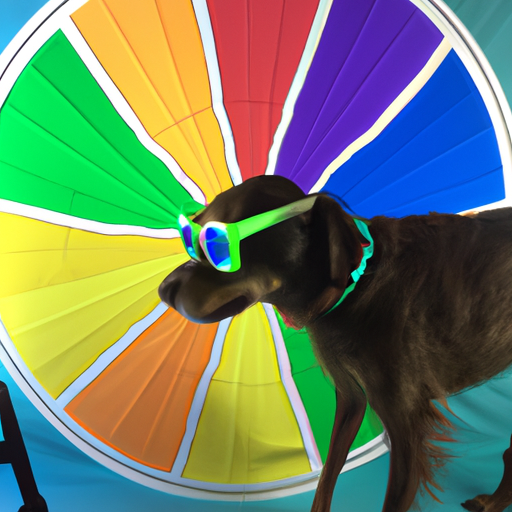As a caregiver, you’re always looking for ways to better understand and care for your furry friend. One of the most intriguing questions you might have asked yourself is: “What color can dogs see best?” Let’s dive into this question and explore the wonderful, colorful world of dogs.
Understanding Dog Vision
Contrary to popular belief, dogs do not see the world in black and white. They do, however, perceive colors differently than humans.
-
Humans vs Dogs: While humans have three types of color receptors (red, green, and blue), dogs only have two (blue and yellow). This means dogs can see shades of blue and yellow the best, but they struggle with colors like red and green.
-
Color Perception: Colors like red and green might appear as shades of gray or brown to dogs. So, if you’re playing fetch with a red ball in a green field, your dog might have a hard time finding it.
Now, let’s take a closer look at the colors dogs can see best.
The Best Colors for Dogs
Here is a table to help you understand what colors dogs see best and which ones they might struggle with:
| Color | Human Perception | Dog Perception |
|---|---|---|
| Red | Red | Gray or Brown |
| Green | Green | Gray or Brown |
| Blue | Blue | Blue |
| Yellow | Yellow | Yellow |
So, if you want to grab your dog’s attention, consider choosing toys or accessories in blue or yellow.
Practical Applications of Dog Color Vision
Understanding your dog’s color vision can have practical applications:
- Choosing Toys: Opt for blue or yellow toys to make playtime more engaging for your dog.
- Training Equipment: Blue or yellow training equipment can be more visible to your dog, making training sessions more productive.
- Home Decor: If you want your dog to avoid certain furniture or areas, consider using red or green colors.
Impact on Dog Behavior
While color vision is just one aspect of a dog’s overall sensory experience, it can impact their behavior in subtle ways. For example:
- Food Choices: Dogs rely more on their sense of smell than color vision when choosing food. However, they might get more excited about a blue or yellow bowl than a red or green one.
- Playtime: Dogs might show a preference for blue or yellow toys, simply because they can see these colors better.
Frequently Asked Questions (FAQs)
Q: Do all dogs have the same color vision?
A: Most dogs have similar color vision, but individual differences can exist, just like in humans.
Q: Is my dog colorblind?
A: In a way, yes. Dogs are considered “colorblind” in the sense that they don’t see the full spectrum of colors that humans do.
Q: What colors should I avoid for dog toys?
A: Red and green might be harder for dogs to see, so blue and yellow could be better choices.
Q: Does color vision affect a dog’s mood or behavior?
A: While color vision can impact some aspects of behavior, dogs rely more on their senses of smell and hearing.
As a caregiver, knowing how your dog perceives the world can deepen your bond and enhance their quality of life. So next time you’re choosing a toy or rearranging your home, remember: dogs might not see the world in technicolor, but they still live a colorful life.



